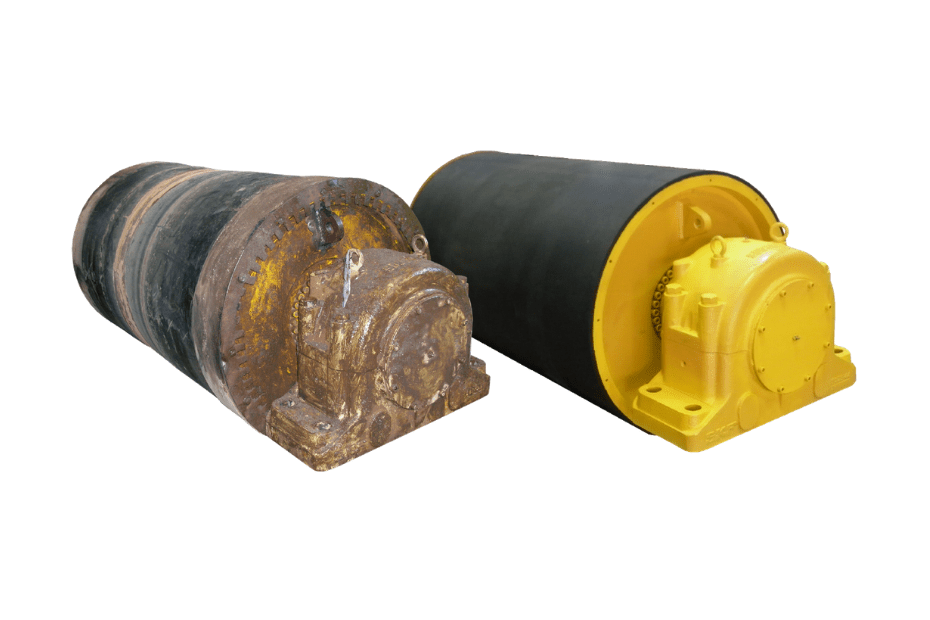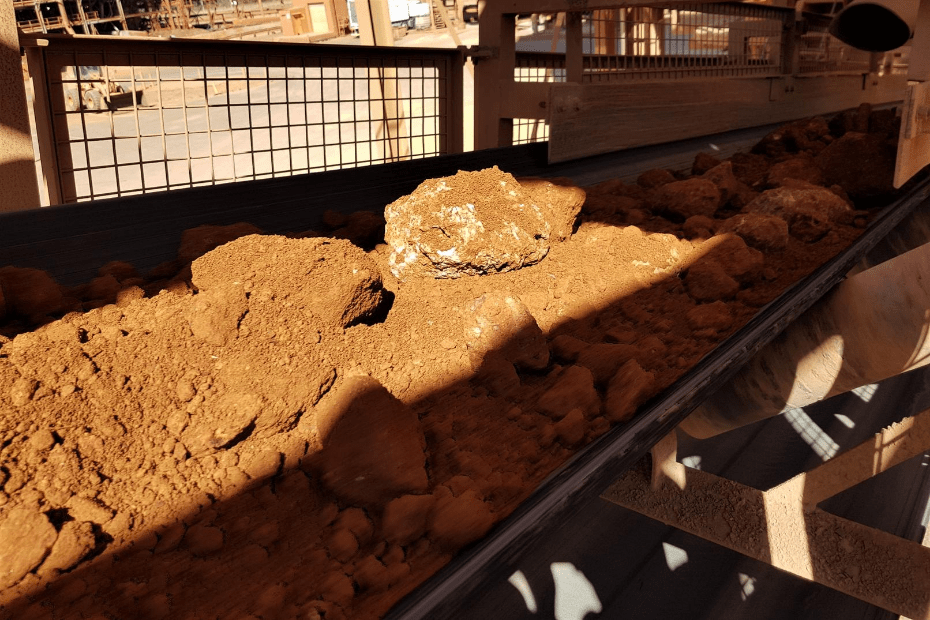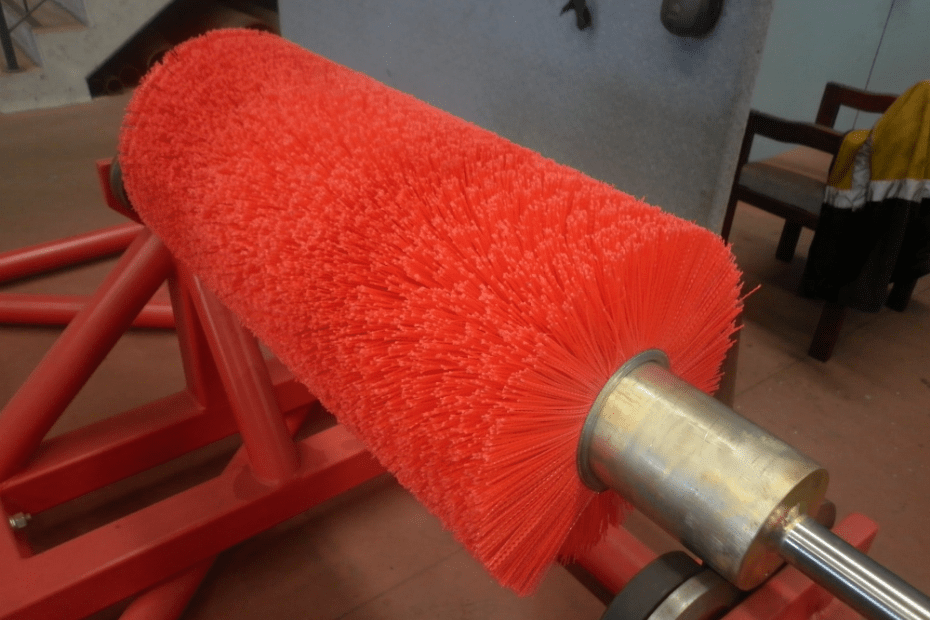Common Causes of Belt Mistracking
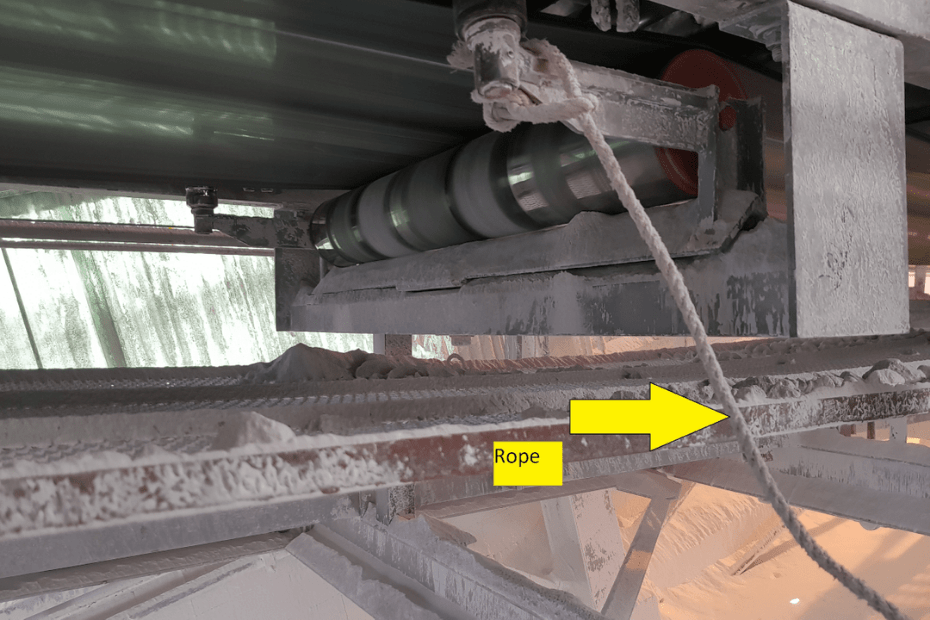
The conveyor belt can be prone to mistracking, which can disrupt the conveyor operations and cause damage to the belt. In this blog post we discuss the common issues and checks you can make to see if your belt is mistracking and what solutions there are.
Sometimes conveyor training rollers need some attention. The photo to the right shows a traditional training roller and frame being held in place by a rope. It’s common to see trainers tied with rope or supported with other devices because they simply don’t steer the belt correctly.
The belt keeps tracking off centre causing the edge of the belt to become damaged and frequently trip the belt drift safety switches. This can cause constant conveyor stoppages.
When recurring issues continuously happen, conveyor operators tend to take matters into their own hands and work around these issues as best they can. The work-arounds are usually effective for a short period of time, however they are sometimes unsafe and not a long-term solution.
Common Issues and Simple Checks
There are some common issues and simple checks which can be performed to prevent belt mistracking. These checks may uncover any underlying mechanical issues.
1. Is the Belt In Poor or Worn Condition?
If the belt is badly worn or stretched, shows signs of cracking or worn through the rubber cover, tracking can be problematic because the belt may no longer be straight.
2. Is the Belt Ripped, Torn or Damaged?
If the belt has rips, holes or any sort of structural damage to the belt carcass, the belt may no longer be straight. This can cause the belt to catch on idlers or other parts of the conveyor causing the belt to run off centre and mistrack.
3. Is the Belt Splice in Poor Condition?
Inspect the splice and make sure it is in good condition, has no flaps, loose items or abrupt edges that may become caught on idlers or other components.
4. Is the Conveyor Pulley Lagging Worn or Material Built Up On the Pulleys?
If the pulley lagging is worn or material builds up around the lagging, this can alter the effective diameter across the pulley. This will likely lead to the belt wandering off-centre, increased instability and may result in the belt running off the edge of the pulley.
5. Has Material Built Up On the Rollers?
If the pulley lagging is worn or material builds up around the lagging, this can alter the effective diameter across the pulley. This will likely lead to the belt wandering off-centre, increased instability and may result in the belt running off the edge of the pulley.
6. Are All the Idlers Rotating?
If idlers cease running or become jammed, the stationary roller may act as a brake on that part of the belt. This can cause the belt to run off to one side and mistrack.
Getting the Correct Fit
Are the trainers you have fitted on your conveyor in good condition and effectively training the belt?
If the trainers are in poor condition or not effectively training the belt to run in the centre of the structure, poor performing trainers may be the cause of belt mistracking.
Look at the trainer closely and if the trainers are looking worn or tired, then it may be time for some new, more effective trainers.
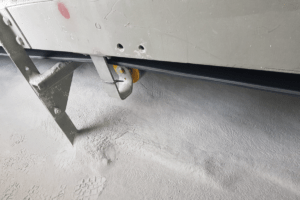 | The conveyor belt is rubbing the idler frame because the belt is not training correctly. |
DYNA-TRAC® Tracking Rollers
The above short clip show how the DYNA-TRAC® tracking rollers performs consistent corrections to keep the belt running smoothly, aligned and centred.
Features
Edge-less Steering
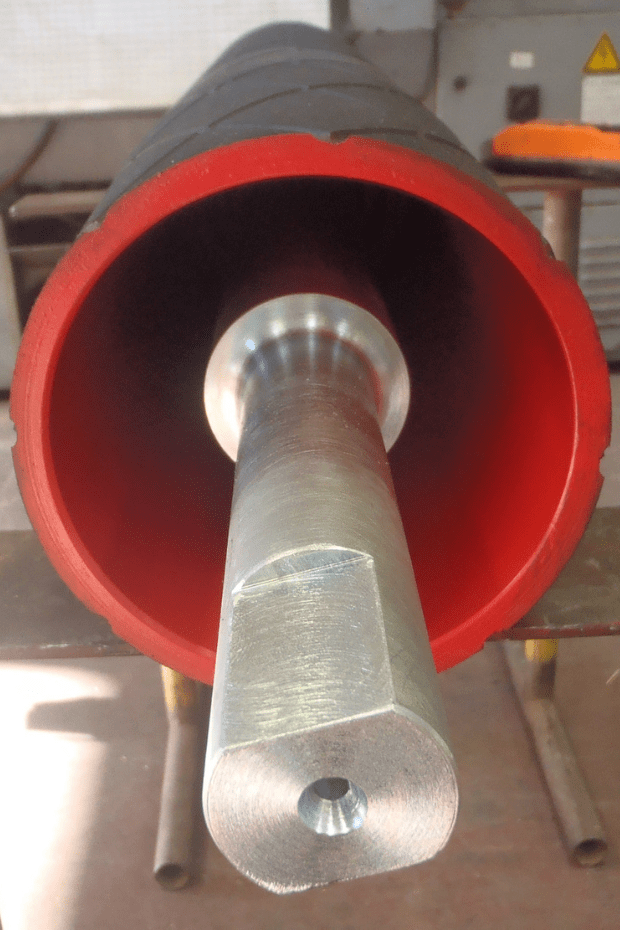
Our edge-less steering design improves tracking performance over traditional training rollers. The self-adjusting mechanism uses belt forces provided by gravity, friction and balance to keep the belt aligned and centred while the belt is in motion.
Our design effectively steers the belt towards the centre of the conveyor without the need for side rollers or pivot frames.
By using conveyor belt forces to adjust the tracking, the tracking roller is constantly adjusting for any small changes in the belt alignment. This eliminates any delayed response which is typical of the traditional tracking rollers.
The intuitive steering mechanism streamlines the correct steering response based on the force applied which helps to prevent mistracking.
Rubber Lagged
All DYNA-TRAC® tracking rollers are supplied with diamond-grooved rubber lagging to improve grip on the belt. This improves the steering performance in a variety of conditions including dry, wet and muddy. Diamond-grooved rubber lagging enables more positive and reliable tracking than the traditional plain steel rollers.
For information on the DYNA-TRAC® tracking rollers, check out our tracking rollers page.
Related Blog Posts
Does Your Pulley Need Refurbishing?
Conveyor pulleys are a heavy-duty, consistently running piece of machinery that are essential components of a conveyor system. Although they are designed to last, after many years of constant use, conveyor pulleys…
Common Causes of Belt Damage
Conveyor belts are a viable component in a conveyor system. It is important to maintain them correctly and minimise any potential stoppages or damage to maintain the maximum up time and service life. In this blog article we discuss…
Conveyor Brush Cleaners Explained
As the name suggests, a brush cleaner is a conveyor cleaning product designed to clean conveyor belts with a sizeable brush. Brush cleaners are usually connected to a gear box and motor which allows the brush cleaner to consistently rotate…
